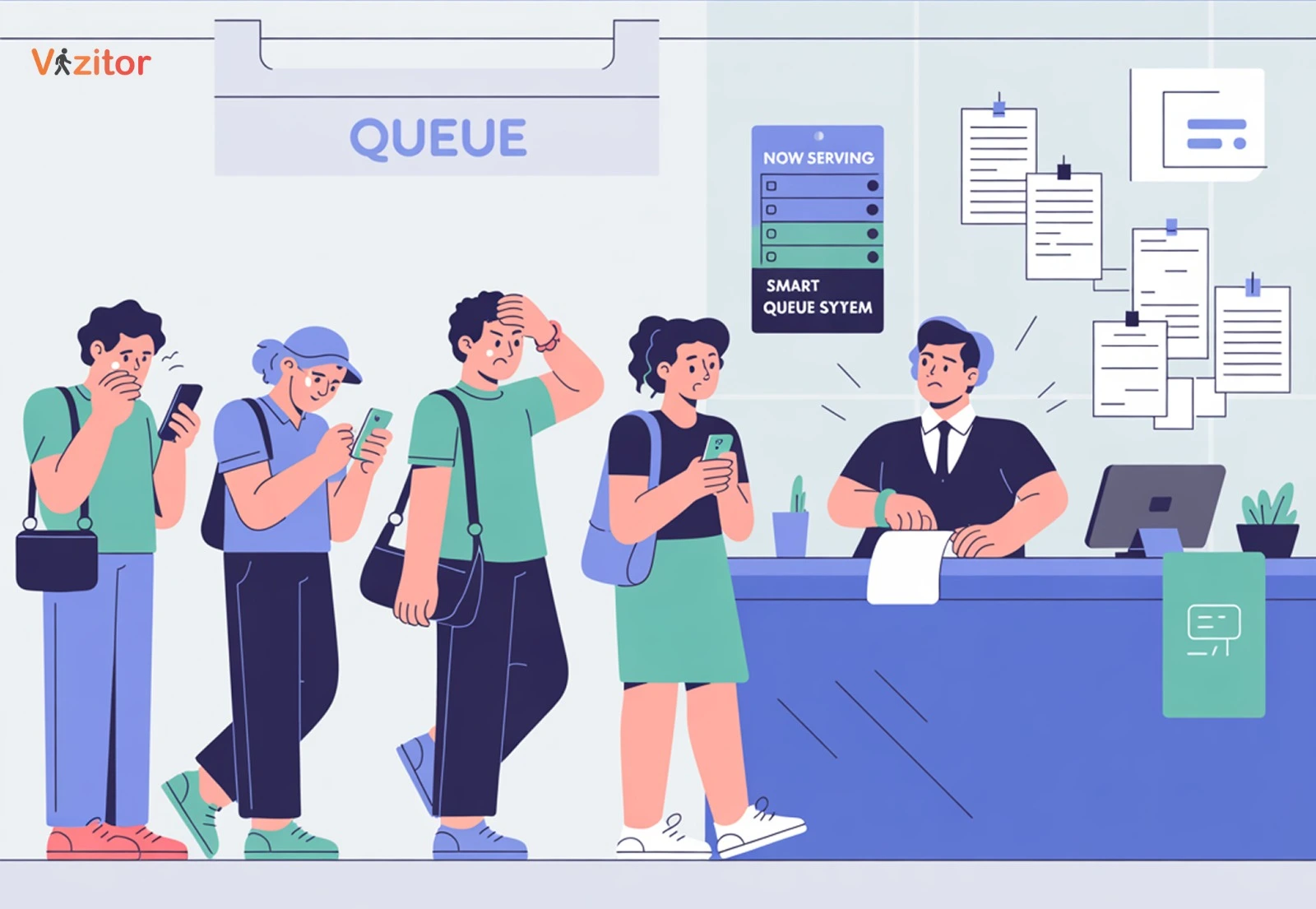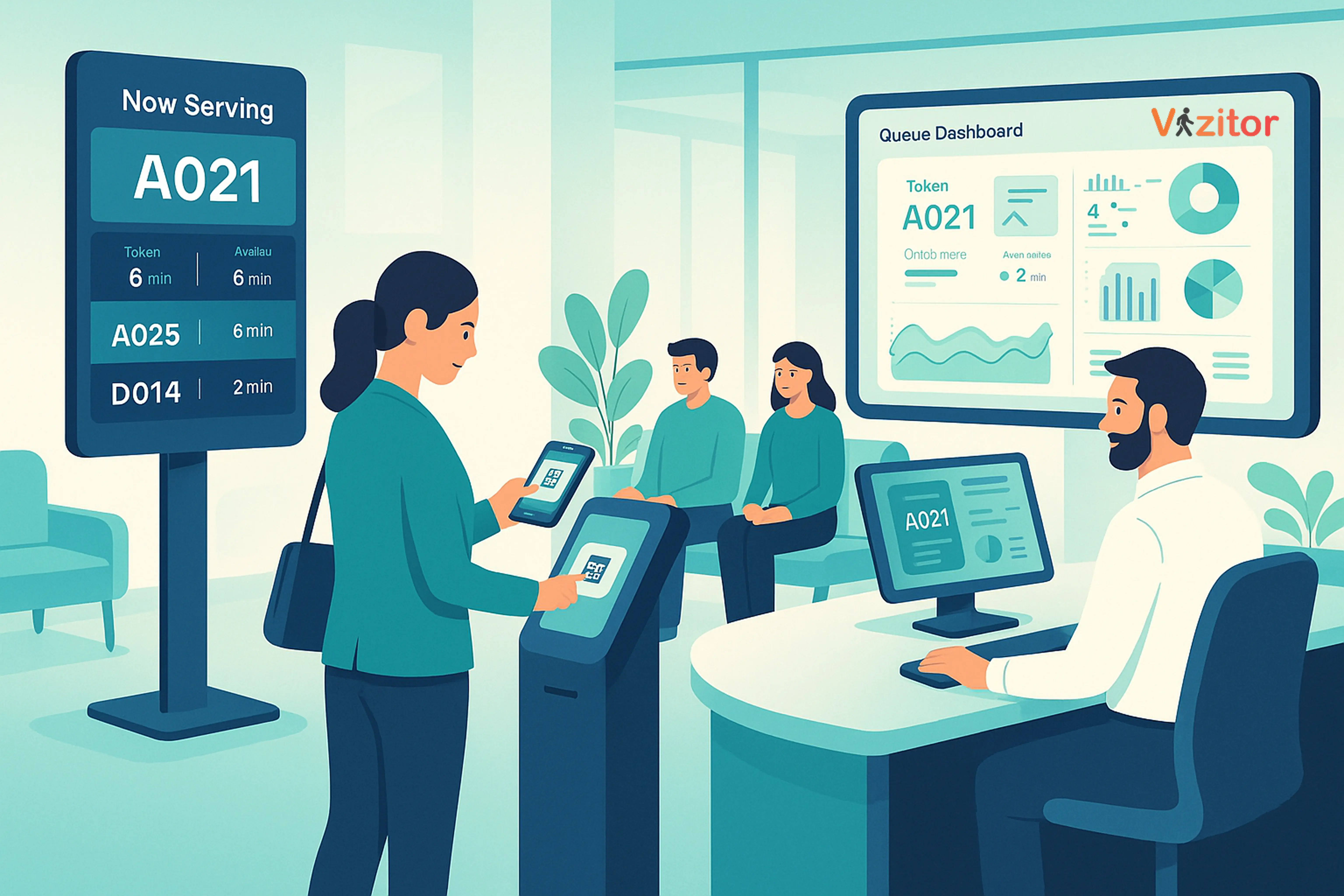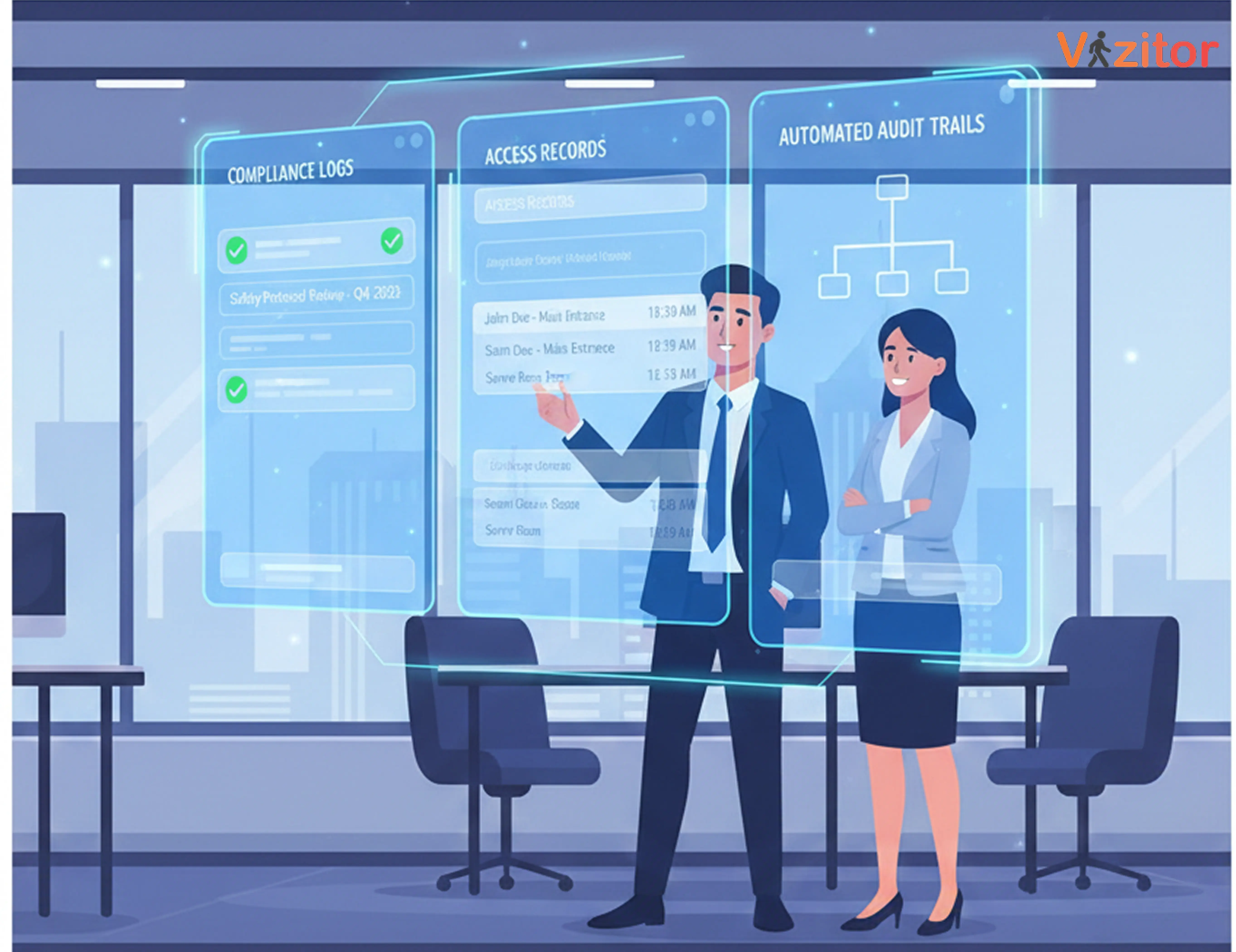How Poor Queue Management is Costing Businesses in 2025
In 2025, poor queue management isn’t just a minor inconvenience, it’s a profit and reputation killer. This blog explores how inefficient queuing systems lead to lost sales, frustrated customers, and demotivated staff, while eroding brand trust over time. It also highlights the hidden costs businesses often ignore, from low productivity to negative online reviews. By adopting a digital Queue Management System (QMS) like Vizitor's QMS, businesses can enable contactless check-ins, real-time updates, and smart queue allocation, cutting wait times by up to 50% and significantly boosting customer satisfaction. Efficient queue management is no longer optional, it’s a strategic necessity for growth in 2025.
Table of Content
Try Vizitor for Free!

Published on: Fri, Oct 17, 2025
Read in 6 minutes
Introduction
Ever stood in a long queue and felt your patience slipping away?
Now imagine that frustration multiplied across hundreds of customers every day, that’s what poor queue management feels like for both customers and businesses.
In 2025, where attention spans are shorter than ever and customer expectations are sky-high, long waiting times aren’t just an inconvenience, they’re a revenue killer.
According to a study by PwC, 73% of customers say experience drives their buying decisions, and bad experiences like long waits push them away permanently.
If your business still relies on manual queues, sign-up sheets, or verbal “please wait” systems, you’re not just losing time; you’re losing trust, loyalty, and profits.
Let’s explore how poor queue management is silently draining businesses in 2025 and what modern solutions like Vizitor’s Queue Management System (QMS) are doing to fix it.
The Real Cost of Long Wait Times
The Customer’s Perspective
A customer’s perception of your brand begins the moment they walk in or join the queue.
Studies show that waiting more than 10 minutes without updates increases frustration and decreases satisfaction levels by up to 40%.
When queues are disorganized:
- Customers leave before completing their purchase.
- Negative reviews pile up online.
- Your staff faces burnout managing crowd chaos.
The Business Impact
Poor queue management leads to:
- Lost sales opportunities due to customer walkouts.
- Lower conversion rates as waiting becomes a deterrent.
- Reduced staff productivity since employees must juggle customer management manually.
In short: inefficiency at the queue is inefficiency at scale.
Hidden Costs Businesses Often Ignore
While the financial losses are visible, the hidden costs of poor queue management are equally damaging.
- Brand Perception: Customers associate disorganization with unprofessionalism.
- Employee Morale: Repeated complaints and pressure create burnout.
- Operational Waste: Time spent manually organizing queues is time lost serving customers.
- Lost Data: Manual queues provide zero insights into wait times or customer patterns.
These small inefficiencies compound over time eroding customer loyalty and brand reputation.
Why Traditional Queues Don’t Work in 2025
Businesses today operate in a real-time, on-demand economy. Customers expect speed, personalization, and transparency.
Traditional queue systems like paper tokens, manual registers, or simple “please wait” signs fail because they:
- Offer no visibility into queue progress.
- Create unequal experiences (some skip, others wait too long).
- Lack real-time updates for both staff and customers.
- Don’t collect actionable data to improve service.
As more industries digitize their front desks and customer touchpoints, manual queuing feels outdated and frustrating.
Industries Most Affected by Poor Queue Management
Let’s look at sectors where inefficient queuing hits hardest in 2025:
Banks and Financial Institutions
Customers expect fast service; delays increase churn. With fintech alternatives offering instant service, a long queue at a branch can mean a lost customer forever.
Healthcare
In hospitals or clinics, poor queue management causes patient dissatisfaction and operational chaos. Patient prioritization becomes impossible without digital systems.
Manufacturing & Facilities
Contractors, visitors, and suppliers crowd entrances during peak hours. Without proper scheduling and digital tokens, operations slow down.
Corporate Offices
Visitors and employees waste time waiting for meeting rooms or approvals hurting overall productivity.
Retail & Hospitality
When customers wait too long, impulse buyers leave, and repeat business drops. Queue frustration directly impacts revenue.
The Psychology of Waiting: Why It Hurts Businesses
Psychologically, customers perceive unoccupied time as longer than occupied time.
That means a 5-minute silent wait feels like 15 minutes when customers aren’t engaged or informed.
Businesses that fail to communicate updates or estimated wait times lose customer patience and ultimately, trust.
Even simple updates like “You’re next in 3 minutes” can transform waiting into anticipation instead of irritation.
How Digital Queue Management Systems Solve These Problems
Modern queue management isn’t about just handling lines, it’s about managing experience.
A Queue Management System (QMS) like Vizitor digitizes the entire process:
Key Benefits:
- Contactless Check-In: Customers or visitors join queues via QR code or online booking.
- Real-Time Updates: Digital screens or SMS notifications show position in line.
- Smart Allocation: The system directs customers to the right counter or service desk.
- Load Balancing: Automatically redistributes traffic during peak hours.
- Analytics Dashboard: Managers can track wait times, busiest hours, and staff efficiency.
With Vizitor, businesses can cut average wait times by 50% and increase customer satisfaction scores by over 30%.
Real-World Example: Retail Chain Transformation
A retail electronics chain struggled with long queues during weekends, leading to angry customers and staff stress.
After implementing Vizitor QMS:
- Wait times dropped from 18 minutes to under 6 minutes.
- Customer feedback scores improved by 42%.
- Staff reported a 25% productivity increase.
Result: Faster service, happier customers, and higher sales; all from fixing one broken process: the queue.
Future of Queue Management in 2025 and Beyond
As AI, IoT, and analytics advance, queue management is becoming more predictive and personalized.
Emerging trends include:
- AI-based demand forecasting to predict peak hours.
- Virtual queues where customers book slots remotely.
- Integrated analytics dashboards for operational decision-making.
- Omnichannel queue systems across web, app, and physical touchpoints.
By 2025, businesses that still rely on manual queues will appear outdated while those that digitize will gain a competitive edge in customer experience.
Frequently Asked Questions (FAQs)
1. What is queue management and why is it important?
Queue management is the process of organizing customer or visitor flow to reduce waiting times and improve service efficiency. In 2025, with higher customer expectations and shorter attention spans, effective queue management directly impacts satisfaction, retention, and revenue.
2. How does poor queue management affect a business?
Long queues and slow service cause customers to leave before being served, damage brand reputation, and increase staff stress. Over time, these inefficiencies lead to lost sales, poor reviews, and reduced loyalty.
3. Which industries are most affected by poor queue management?
Sectors like retail, healthcare, banking, hospitality, and manufacturing face major challenges when queues are unmanaged. In these environments, even a few extra minutes of waiting can mean lost customers or operational delays.
4. What are the hidden costs of poor queue management?
Beyond financial loss, poor queue management leads to low staff morale, wasted time, poor data insights, and negative brand perception. These hidden costs often hurt long-term growth more than immediate revenue loss.
5. How can a digital Queue Management System (QMS) help?
A digital QMS like Vizitor QMS automates the entire queuing process from digital check-ins via QR code to real-time status updates, load balancing, and analytics dashboards. It keeps both customers and employees informed, reducing chaos and boosting efficiency.
6. Does a QMS work for small and medium-sized businesses?
Absolutely. Vizitor QMS is highly scalable and customizable, making it ideal for SMBs that want to provide enterprise-level experiences without heavy infrastructure or complex setups.
7. How quickly can a QMS improve customer satisfaction?
Most businesses notice results within weeks of implementation shorter waiting times, better feedback, and more repeat customers. Digital queueing helps convert wait time into engagement time.
8. What features should I look for in a queue management system?
Look for features like real-time queue tracking, contactless check-ins, automated notifications, analytics, and multi-counter support. Vizitor QMS offers all these along with seamless integration options.
Conclusion
Poor queue management is more than an operational inconvenience, it’s a profit leak. Every extra minute customers spend waiting is a moment they could be spending with your competitors.
By implementing a digital Queue Management System like Vizitor QMS, businesses can:
- Reduce waiting times
- Improve customer satisfaction
- Optimize staff utilization
- Strengthen brand reputation
In 2025, efficient queue management isn’t optional, it’s essential for growth.
Tired of losing customers to long waits?
Transform your queues with Vizitor QMS, your smart solution for faster service, happier customers, and a seamless experience.
Contact us and see the difference!









